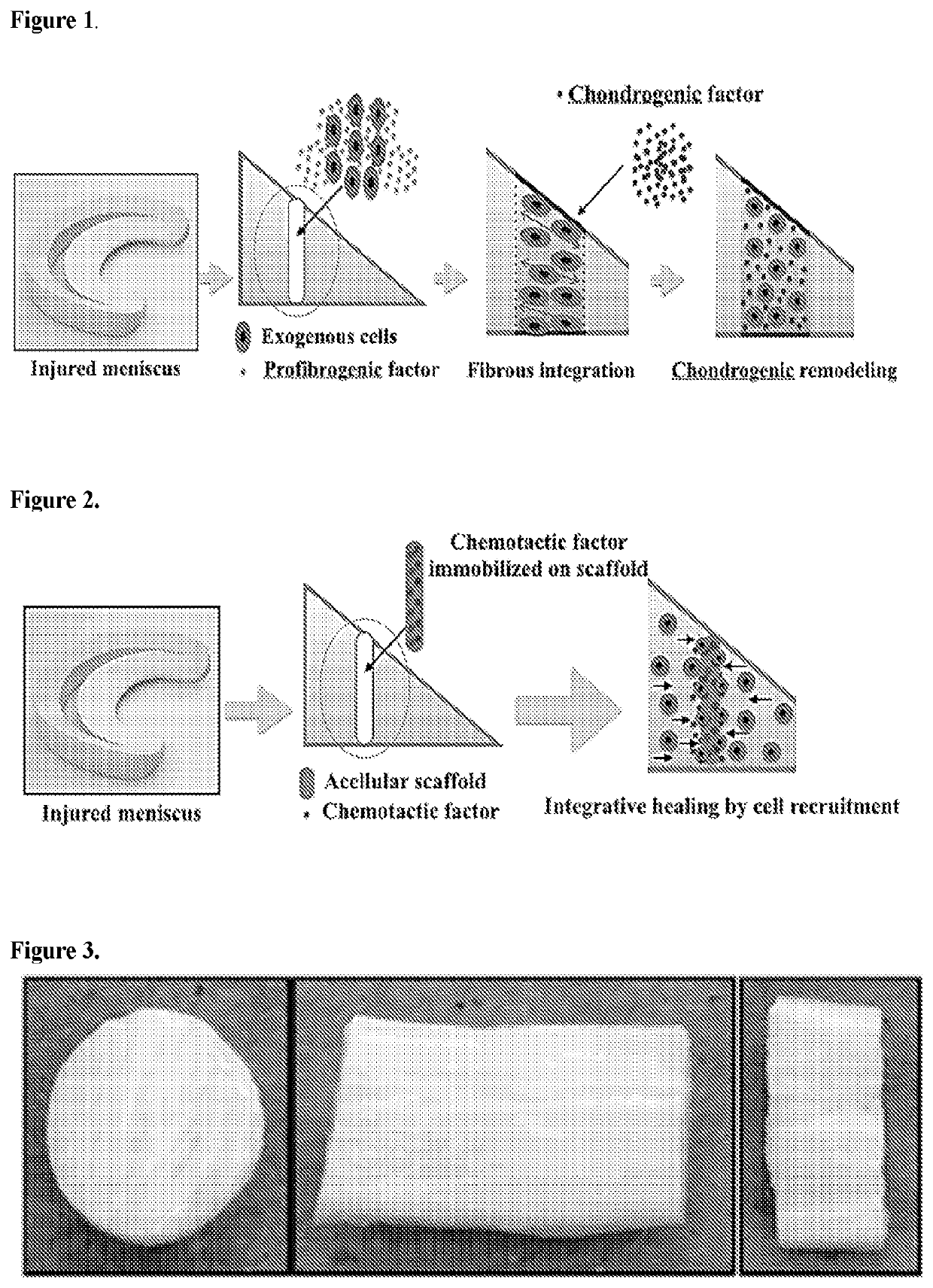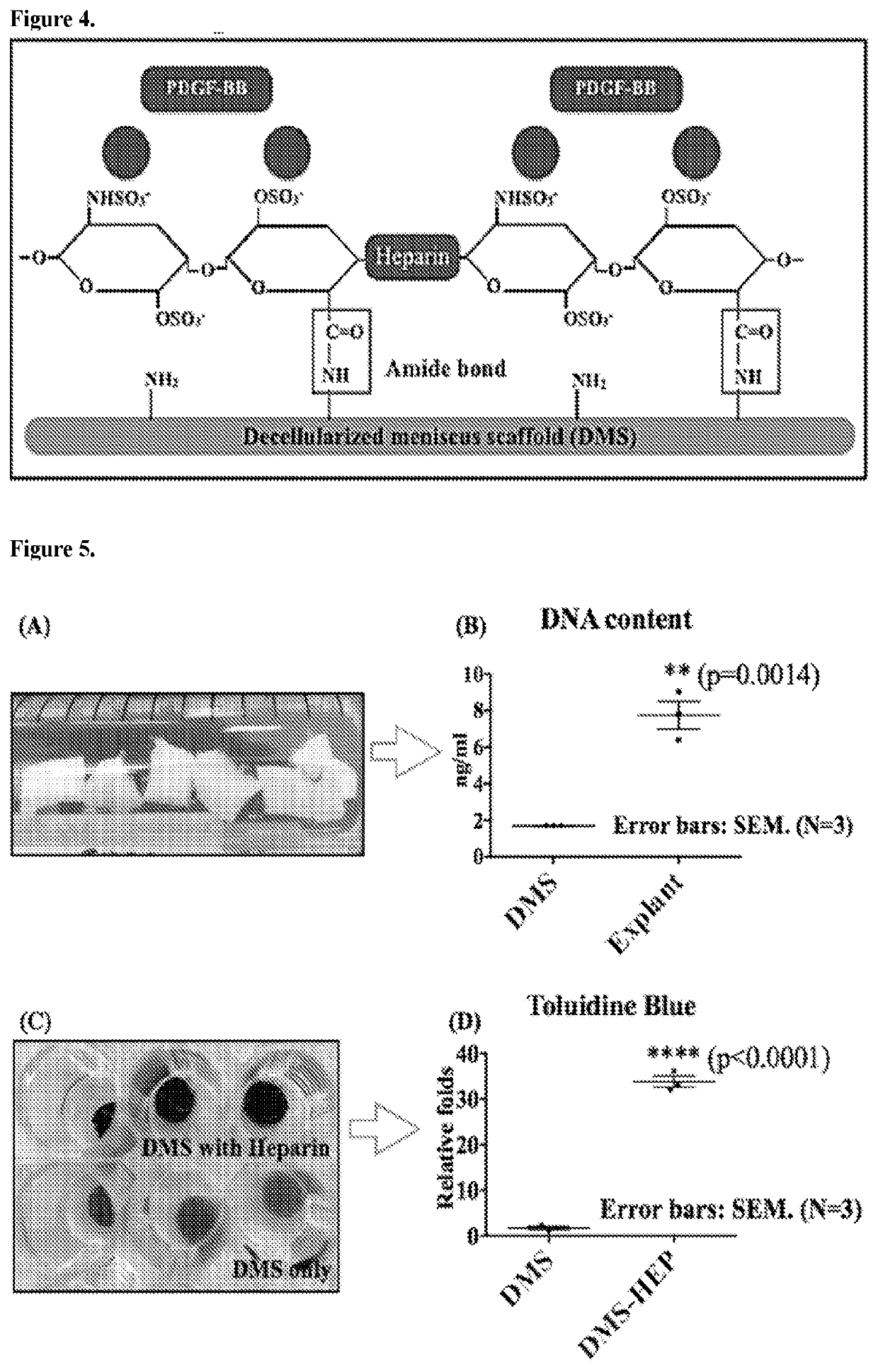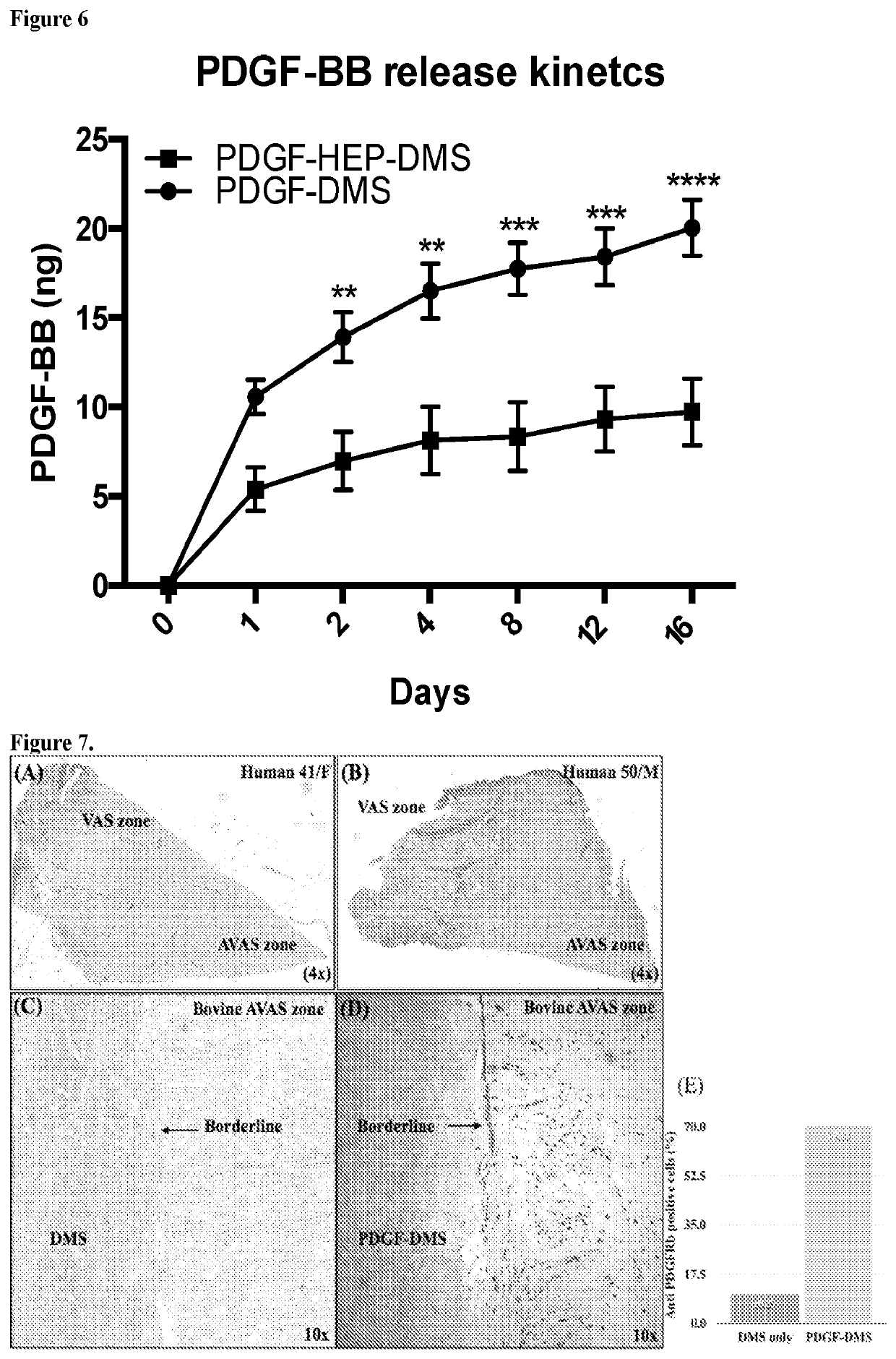Functionalized Scaffold To Promote Meniscus Repair
a functional scaffold and meniscus technology, applied in the field of scaffolds and methods of tissue repair and/or regeneration, can solve the problems of limited use of allografts, major risk factors for development, and pain in the knee, and achieves the effects of reducing the risk of development, and reducing the risk of injury
- Summary
- Abstract
- Description
- Claims
- Application Information
AI Technical Summary
Benefits of technology
Problems solved by technology
Method used
Image
Examples
example 1
Generally
[0058]Forceful twisting, rotating, or hyper-flexion of the knee joint leads to traumatic tears of the meniscus. A torn meniscus causes knee pain, swelling, stiffness, and limitations in extending the knee. Current surgical approaches to address meniscus tears include suturing, and partial meniscectomy. However meniscal tears in the inner third, the avascular region, typically do not heal spontaneously or after surgical interventions and represent a major risk factor for the development of knee osteoarthritis (OA). The middle and inner zones of meniscus lack blood supply therefore have the least potential for healing.
[0059]Cells that have potential to promote meniscal repair and regeneration are present in the meniscus adjacent to the tear and in synovium and joint capsule. Application of chemotactic factors to the tear site thus has potential to recruit cells that mediate repair. Growth factors have potential to promote meniscus healing and various approaches including gene...
example 2
Acellular Meniscus Graft
[0062]As known to a skilled artisan in the art, meniscus tears are among the most common knee injuries; and while certain treatments currently exist for meniscal injuries, the treatment options do not result in meniscal repair or regeneration. In some cases, a partial meniscectomy or total meniscectomy is performed to treat the patient. These treatments often result in osteoarthritis in the patient, and / or scar tissues.
[0063]In various embodiments, the inventors solved this problem by developing a chemotactic-acellular meniscus graft for integrative meniscus healing. In one embodiment, the inventors characterized the decellularized meniscus scaffold (DMS) for host cell infiltration. Decellularized native meniscus tissue is a promising biological scaffold for repair of the injured human meniscus. It has similar biological and mechanical characteristics compared with native meniscus. Moreover, the ideal scaffolding should also include a chemotactic factor to re...
example 3
Significance
[0067]The main body of the meniscus is a fibrocartilaginous semilunar structure, which is located at the peripheral aspect of the joint between the tibia and femur. The two anterior and posterior horns are connected with the tibial plateau. The meniscus provides cushioning by transducing compression and tensile-hoop stresses which are attenuated at the tibial plateau via fibrocartilaginous enthesis.
[0068]Meniscus tears are the most common injury of the knee joint. Not only normal meniscus, but also developmentally abnormal menisci, in particular discoid menisci are at increased risk for tear. Even stable discoid meniscus can present with mechanical symptoms of meniscal tear. Many cases are associated with anterior cruciate ligament (ACL) injuries such as chronic ACL insufficiency and acute ACL rupture. Different injury patterns may be associated with different risk factors such as gender, age, body weight, and injury mechanism. Even though the outer one third of the meni...
PUM
| Property | Measurement | Unit |
|---|---|---|
| size | aaaaa | aaaaa |
| diameter | aaaaa | aaaaa |
| diameter | aaaaa | aaaaa |
Abstract
Description
Claims
Application Information
 Login to View More
Login to View More - R&D
- Intellectual Property
- Life Sciences
- Materials
- Tech Scout
- Unparalleled Data Quality
- Higher Quality Content
- 60% Fewer Hallucinations
Browse by: Latest US Patents, China's latest patents, Technical Efficacy Thesaurus, Application Domain, Technology Topic, Popular Technical Reports.
© 2025 PatSnap. All rights reserved.Legal|Privacy policy|Modern Slavery Act Transparency Statement|Sitemap|About US| Contact US: help@patsnap.com



